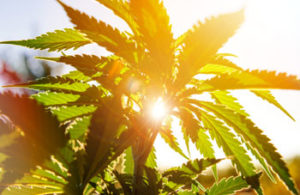 THC concentration has been the longstanding measuring stick for quality Cannabis. So much so that the price of Medical Cannabis is often tiered based on how high a THC concentration can be achieved. Unfortunately, the number listed on the label is often a misrepresentation of both the product’s true THC concentration, as well as the overall quality of the Cannabis.
THC concentration has been the longstanding measuring stick for quality Cannabis. So much so that the price of Medical Cannabis is often tiered based on how high a THC concentration can be achieved. Unfortunately, the number listed on the label is often a misrepresentation of both the product’s true THC concentration, as well as the overall quality of the Cannabis.
First and foremost; it is important to understand that the THC concentration of Cannabis inflorescences on a given plant vary significantly from the base (bottom) of the plant to the apical portion (top). High quality, agriculturally engineered and cultivated Cannabis usually ranges from about 8-12% at the base (or bottom of the plant), to 20-25% at the apical meristem (top of the plant). When the flower of a given plant, and a given batch, are mixed and averaged, even the highest THC concentrations rarely approach 20%. Most high-quality products, when properly sampled and averaged, will yield THC potency levels of 12-18%.
So why are there products on the shelves that list 20%, 22%, even 27%? First of all, there is a common misconception that higher THC concentrations yields the best effect from Cannabis. This, however, has been shown to be untrue. The true user-experience of Cannabis is born from an entourage effect that comes from the combination of specific Cannabinoid ratios (not potencies) and specific ratios of Terpenoids. The highest quality Cannabis comes from cultivating unique blends of Cannabinoids and Terpenoids (like blending grapes for wine, or grains for alcohol), not from merely generating the highest potency.
Many cultivators find ways of getting higher than truthful THC potency numbers listed on their labels, because they believe the misconception that high THC equals quality Cannabis. They do this by finding analytic laboratories with less than accurate methods, and grow in states where the cultivator is allowed to choose their sample to be tested (often submitting only the highest concentration apical buds from the top of the plant as their “representative sample”). This practice hinders the growth of the Cannabis industry, both scientifically and economically. As the West Coast has begun to show us, it’s not THC that matters; its all the Cannabinoids, and their ratios, along with all the Terpenes, and their ratios. Labels in California now list not only the analytic lab that tested the material, but multiple Cannabinoid concentrations, along with multiple Terpene concentrations. This more advanced labeling reinforces the importance of the entourage effect, as many of the top selling products on the West Coast have THC concentrations which would be considered low on the East Coast, yet are incorrectly considered lower quality products.
So, in summary – it’s time to move away from inflated and false THC concentrations, and move toward accurately measured Cannabinoid and Terpene profiles. The future is high def.
